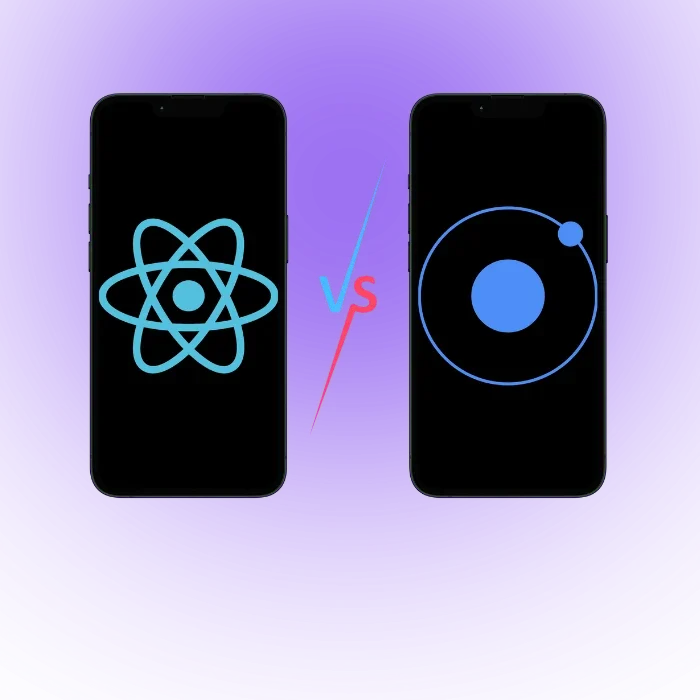Introduction
The design, deployment, and scaling of programs have all been revolutionized by cloud computing, which has become a crucial component of contemporary software development. The value of cloud computing cannot be emphasized in this age of connectivity and digital transformation. Organizations of all sizes, from startups to large corporations, are adopting the cloud to improve user experiences, streamline operations, and spur innovation. Programming languages, those complex systems of instructions that allow programmers to create the software that drives our digital world, play a vital part in this shift.
Significance of Cloud Computing in Modern Software Development
Technology trends come and go, but cloud computing has gone beyond that to become a fundamental part of contemporary software development. Applications are now designed and implemented using its on-demand access to computing resources, data storage, and scalable infrastructure. Through the cloud, businesses may now reduce costs, accelerate time to market, and achieve previously unheard-of levels of flexibility. This change has also opened up access to technology, enabling individuals and small businesses to compete globally.
The Role of Programming Languages In Cloud Application Development
The craftsmen’s tools in the world of cloud computing are programming languages. They serve as the intermediaries between abstract ideas and real-world digital solutions. The performance, scalability, and compatibility of an application with the cloud environment are significantly impacted by the programming language choice. The choice of the best language for a cloud project can affect the success of the project because every language has strengths and disadvantages of its own.
Cloud Computing Programming Languages
Software development is changing paradigms as traditional programming languages give way to cloud-native alternatives. Languages that are “cloud-native” are specifically designed to handle the special problems and opportunities that cloud settings provide. They provide a stronger emphasis on distributed computing, scalability, fault tolerance, and interoperability with cloud services than their conventional counterparts. As a result of this change, developers must adopt fresh perspectives and methods that are compatible with cloud computing.
The Transition from Traditional to Cloud-Native Languages
The design of conventional programming languages was centered on single-machine computing. However, these languages have difficulty dealing with distributed architectures and the dynamic nature of cloud resources as more applications move to cloud environments. On the other hand, cloud-native languages are designed to thrive in this new environment. They include capabilities that make it easier to build robust, scalable apps that can fully utilize the cloud.
Why Cloud-Native Languages Matter in Cloud Application Development
Languages that are specifically designed for the cloud are not just a fad in technology; they are essential for creating productive cloud applications. These programming languages introduce ideas that let programmers build software that is naturally fault-tolerant, elastic in scalability, and resource-efficient. These languages give developers the tools they need to make use of the cloud’s benefits and create applications that satisfy the requirements of contemporary computing by adhering to the cloud computing principles.
Python
In the field of cloud development, Python has shown to be a powerful and adaptable tool. It is a great option for developers looking to create cloud-native applications quickly because of its readability and simplicity. The vast library ecosystem of Python further streamlines the creation process by offering pre-built modules and coding frameworks. The interpretive character of the language and its dynamic typing support quick development cycles, which are essential in the fast-moving cloud context.
Using Python’s Versatility for Cloud Applications
Python’s adaptability shines in the creation of cloud-based applications. Python supports a wide range of cloud use cases, from web development and automation to data analysis and machine learning. Because of its elegant syntax, the code is clear and concise, which simplifies cooperation and maintenance. The robust community around Python also guarantees that programmers have access to a huge library of tools, modules, and frameworks that speed up the creation of cloud applications.
Flask and Django for Rapid Cloud-Native Development
Flask and Django are two frameworks that demonstrate Python’s efficiency in cloud development. Flask, which is renowned for its straightforward design, provides a simple and adaptable framework for creating online applications. It makes it simple for developers to define APIs, build microservices, and launch cloud-native apps. Django, a high-level framework, on the other hand, offers a complete set of capabilities for quick development, security, and scalability. Developers may concentrate on business logic rather than boilerplate code because of its “batteries-included” attitude.
Java
Java’s “Write Once, Run Anywhere” guiding principle has been put to the test in cloud contexts. Because of its platform independence, it is a solid option for cloud applications that must function correctly across many architectures and operating systems. Java’s appeal in cloud development is largely due to its developed ecosystem, large library collection, and supportive community.
Java’s Write Once, Run Anywhere Philosophy in Cloud Environments
Java’s platform freedom is the cornerstone of its usefulness in cloud systems. Java code can be written once and executed across many platforms without modification by developers. In cloud computing, where applications may be distributed across several cloud providers or on-premises infrastructure, this portability is crucial. By eliminating the need for recompilation, Java’s bytecode compilation methodology further improves its compatibility by enabling applications to run on any Java Virtual Machine (JVM).
Java Ecosystem: Libraries and Frameworks for Cloud Projects
A variety of cloud development situations are supported by Java’s broad ecosystem of libraries and frameworks. With capabilities like dependency injection, microservices architecture, and cloud interaction, libraries like Spring offer full tools for creating cloud-native apps. A standardized method for creating dependable, scalable enterprise applications that can be easily deployed in cloud environments is provided by Java EE (Enterprise Edition).
Node.js
JavaScript, which is typically associated with front-end web development, has discovered a new application in cloud computing thanks to Node.js. Developers can run JavaScript code on the server side using the Node.js runtime environment. Because frontend and backend languages are combined, development is streamlined and code reuse is encouraged, making Node.js a desirable option for building full-stack cloud applications.
Full-Stack Cloud Development With NodeJS
High concurrency and responsiveness are made possible by Node.js’ event-driven, non-blocking architecture in cloud applications. This is especially helpful in situations where applications need to manage a lot of connections at once, like in real-time communication or data streaming. The scalability and resource optimization requirements of the cloud are met by Node.js’s lightweight design and effective handling of asynchronous processes.
Enhancing Concurrency in Cloud Apps with Asynchronous Programming
Asynchronous programming, a Node.js strength, is essential for cloud applications that demand more concurrency. Asynchronous programming allows activities to move forward independently, improving application responsiveness, in contrast to traditional synchronous programming, which requires each action to wait for the preceding one to finish. Asynchronous programming ensures effective resource utilization and a seamless user experience in cloud environments where unpredictability is widespread.
Go (Golang)
Google developed the open-source programming language Go, sometimes referred to as Golang. It has attracted interest in the realm of cloud computing, notably in microservices and container-based architectures, because of its emphasis on efficiency, performance, and simplicity.
Exploring the Performance Benefits of Go for Cloud Projects
Go’s emphasis on efficiency and speed makes it the perfect choice for cloud projects that call for quick resource optimization and execution. Applications run effectively without sacrificing efficiency thanks to their statically typed nature and compilation technique. In cloud environments where programs must scale dynamically to manage changing workloads, this efficiency is essential.
Microservices and Container-Based Architecture with Golang
Go’s lightweight threading model and support for concurrent programming are in line with the ideals of microservices architecture. Languages that handle concurrency gracefully are needed for microservices, a design style where applications are divided into modular, independently deployable components. Concurrency primitives included in Go, including go routines and channels, make it easier to build scalable and responsive microservices.
Ruby
Ruby, renowned for its beautiful syntax and developer-friendly features, has made a name for itself in the creation of cloud-based applications. Even while Ruby is less well-known than some other languages, its distinctive qualities make it a strong contender for specific cloud use cases.
Ruby’s Syntax Elegance for Swift Cloud Application Development
Ruby’s syntax encourages understandable, clean code, which boosts developer productivity and teamwork. In the cloud development space, where quick iterations and adaptability are essential, this elegance is especially useful. Ruby’s expressive syntax and dynamic nature produce code that is clear and succinct, making it ideal for cloud applications.
Efficiency of Ruby on Rails in Cloud Environments
Rails, sometimes known as Ruby on Rails, is a full-stack web framework created with Ruby. By offering established frameworks and best practices, its “convention over configuration” approach quickens the development process. Rails enables developers to concentrate on building features rather than wrestling with boilerplate code in cloud environments, where time-to-market is crucial.
C#
Microsoft’s C# language has been increasingly popular in cloud programming, especially since the release of .NET Core. Its contemporary attributes, memory management skills, and ecosystem support make it a competitive option for creating cloud-native applications.
.NET Core and C#: A Dynamic Duo for Cloud Applications
Developers can create cross-platform cloud applications by using the open-source, cross-platform.NET Core framework, which was created by Microsoft. .NET Core offers a complete solution for creating scalable and effective cloud-native apps when paired with C#. Effective cloud programming is made possible by its standardized libraries, dependency injection, and performance optimization tools.
Memory Management and Versatility: C#’s Edge in Cloud Development
In cloud applications, where effective resource utilization is critical, C# provides capabilities that improve memory management and efficiency. The language’s automatic memory management system eliminates memory leaks and guarantees dependable application performance. Additionally, the adaptability of C# enables developers to design a variety of applications, from sophisticated enterprise solutions to cloud microservices.
Scala
The flexible programming language Scala combines the object-oriented and functional programming paradigms with ease. It is an excellent candidate for cloud applications that require scalability and resilience because to its capacity for handling complicated computations, parallel processing, and fault tolerance.
Power of Scala’s Paradigm Fusion in Cloud
Application designers may create apps that are both beautiful and effective thanks to Scala’s integration of object-oriented and functional programming. When developing apps for the cloud, where they must manage intricate workflows and data transformations, this paradigm fusion is very helpful. Scala’s short syntax and immutability support result in code that is simple to understand and update.
Parallel Processing and Fault Tolerance with Scala in Cloud Projects
Applications must frequently process enormous amounts of data concurrently in cloud environments. Due to Scala’s built-in support for parallel processing, programmers can create applications that run several jobs concurrently, speeding up processing and improving efficiency. Applications that are fault-tolerant and resilient are further made possible by Scala’s emphasis on immutability and its Actor model, a concurrency paradigm built on independent actors.
Rust
Because of its emphasis on memory safety, efficiency, and secure coding, Rust, a systems programming language created by Mozilla, has drawn attention. Rust is a desirable option for cloud systems that place a high priority on performance and security because of these characteristics.
Rust Focuses on Memory Safety and Secure Cloud Development
In cloud computing, where applications could be exposed to several vulnerabilities, security is of utmost importance. The ownership and borrowing mechanism in Rust imposes stringent memory safety regulations, guarding against typical programming problems like buffer overflows and null pointer dereferences. Rust improves the security posture of cloud applications by removing memory-related issues.
Zero-Cost Abstractions and Cloud-Native Performance with Rust
Rust’s “zero-cost abstractions” ethos enables programmers to create high-level, effective code. In cloud environments, where applications must balance performance and resource optimization, this is especially important. Rust’s system-level management and low-level memory management give programmers the tools they need to build cloud-native applications that are fast and secure.
Kotlin
JetBrains’ statically typed programming language Kotlin has become popular as a Java substitute, especially for cloud development. It is a desirable option for creating cloud-native applications due to its rich syntax and smooth compatibility with Java libraries.
Kotlin’s Expressive Syntax for Enhanced Cloud Development
Developers may express complicated ideas using clear and understandable code because of Kotlin’s grammar, which encourages readability and conciseness. The collaborative and productive character of developers is improved by their expressive nature, which is essential in the hurried cloud environment. Code that is less prone to errors is also made by Kotlin’s contemporary features, such as null safety and extension functions.
Interoperability with Java Libraries: Streamlining Cloud Application Building
Because Kotlin is compatible with Java libraries, developers have access to a wide ecosystem of resources and tools for creating cloud apps. By enabling developers to easily include pre-existing Java libraries in their Kotlin projects, this interoperability accelerates the development process. Because Kotlin can work together with Java code, developers can take advantage of tried-and-true methods while also taking advantage of Kotlin’s expressive syntax.
Swift
Swift is a programming language created by Apple that was initially intended for creating iOS apps. However, its effectiveness, security features, and adaptability have increased its applicability to cloud application development.
Extending Swift’s Performance and Expressiveness to Cloud
Swift’s emphasis on speed and effectiveness applies perfectly to cloud settings. Swift’s compiled nature ensures that programs run quickly without sacrificing efficiency, which is essential for cloud services that need quick execution and little resource use. Swift’s performance is especially useful in cloud environments where real-time data processing or analytics are required by apps.
Building Resilient and Reliable Cloud Solutions with Swift
Swift’s security features aid in the development of robust and trustworthy cloud systems. Application stability is improved by the language’s strong typing and optional handling of optional, which lower the possibility of runtime problems. Swift’s memory management architecture further gets rid of typical memory-related problems, which helps to make cloud apps that are trustworthy and strong.
PHP
PHP, a popular scripting language for web development, has surprisingly found use in the creation of cloud-based applications. For some cloud use cases, its evolution and adaptability make it a useful asset.
PHP’s Evolution from Web Development to Cloud Experimentation
The evolution of PHP from a web development language to a component in cloud experiments shows how adaptable it is. PHP has developed to accommodate cloud scenarios that call for scripting and automation, despite being initially created for server-side scripting in web applications. As a result of this growth, developers can use PHP’s familiarity and ease of use in cloud projects.
Swift Prototyping and Iteration with PHP in Cloud Projects
Rapid prototyping and iteration are crucial for testing and honing concepts in cloud development. PHP’s scripting capabilities enable speedy code development, which makes it appropriate for testing cloud concepts. Before committing to more complex implementations, developers can use PHP to create prototypes, test functionality, and validate cloud application ideas.
Perl
Dynamic computer language Perl, which is well-known for its text-processing abilities, has found use outside of its native field. Perl’s scripting prowess in cloud computing extends to managing and automating cloud infrastructure.
Perl’s Role in Cloud Infrastructure Management and Automation
Automation and effective administration of complicated tasks are required for cloud infrastructure management. Perl excels at parsing configuration files, logs, and data streams thanks to its text-processing features and built-in regular expressions. For automating cloud infrastructure activities like provisioning, configuration management, and monitoring, Perl is a useful tool.
Text Processing and Extensive Libraries: Perl’s Contribution to Cloud
Different cloud development scenarios are supported by Perl’s robust library ecosystem. Perl provides modules and packages that speed up cloud-related operations, like parsing JSON data, connecting with APIs, and executing data transformations. Because of its versatility and flexibility, developers who need to combine various cloud services and components frequently choose to use this language.
Haskell
Purely functional programming language Haskell is well known for its emphasis on correctness and mathematical accuracy. Haskell’s characteristics aid in the construction of dependable and robust applications for the cloud.
Haskell’s Strong Type System and Functional Paradigm in Cloud
Runtime errors are less likely because of the strict accuracy checks that the strong type system in Haskell enforces. This quality is crucial for cloud development because unsuccessful applications might have serious repercussions. The functional model of Haskell, which shuns mutable states, is compatible with the parallelism and scalability demands of the cloud.
Immutability and Purity in Cloud Projects
The emphasis on purity and immutability in Haskell makes cloud applications more resilient. Applications are more dependable because immutability removes numerous frequent programming errors. Purity guarantees that functions have no side effects, which makes it easier to reason about code behavior and makes it easier to build reliable cloud solutions.
C++
Performance and resource optimization are crucial in cloud computing, where C++, a language known for its efficiency and control, has a position.
C++’s Efficiency and Control for Intensive Cloud Computing
Resource-intensive operations including data processing, machine learning, and simulations are frequently used in cloud computing. Because of its effectiveness, support for inline assembly, low-level memory management, and high-performance requirements, C++ is a great option for programs that need to make the best use of their resources.
Resource Optimization and Low-Level Management with C++
C++ gives developers complete control over memory management and resource allocation, making it appropriate for cloud projects that call for customization. C++ helps developers to efficiently optimize algorithms and memory allocation in cloud settings, where effective resource utilization can affect prices and application performance.
C Programming
C, a language renowned for its effectiveness and adaptability, has withstood the test of time and is still useful in the construction of cloud infrastructure.
C’s Efficiency, Portability, and Versatility for Cloud Infrastructure
The portability and efficiency of C make it the perfect language for cloud infrastructure projects. C offers low-level control and direct memory access, which are essential for interacting with hardware and managing cloud infrastructure components, from building device drivers to creating system-level programs.
System-Level Cloud Programming and the Role of C Language
The administration of cloud infrastructure frequently entails interactions with hardware elements and system-level operations. C is positioned as a language that can communicate with cloud servers, storage, and networking components due to its strengths in system-level programming, memory management, and direct hardware access.
Conclusion: Navigating the Cloud Programming Maze
The choice of programming language is crucial to the development of applications in the quickly changing world of cloud computing. The capabilities that each language possesses enable it to support a variety of cloud use cases. Developers have a wide variety of tools at their disposal when starting cloud projects, ranging from the ease of use of Python to the security of Rust, from Java’s scalability to Go’s effectiveness.
The Strategic Importance of Choosing the Right Language for Cloud
A strategic choice that affects an application’s performance, scalability, security, and development time is the choice of a cloud-native programming language. Developers must take into account elements like the use case for the application, resource needs, and interoperability with cloud services.
Summing Up the Benefits and Use Cases of Cloud-Native Languages
Programming languages that are native to the cloud allow developers to fully utilize cloud settings. Each language offers a special contribution to the development of cloud applications, whether it is handling parallel processing, maintaining memory safety, attaining quick development cycles, or creating micro-services. The relationship between cloud computing and programming languages will continue to be a key engine of innovation and success as the cloud continues to change the software landscape.
FAQs
What are the key factors to consider when selecting a programming language for cloud computing?
When choosing a programming language for cloud computing, several factors come into play. Firstly, compatibility with cloud platforms and services is crucial. A language that seamlessly integrates with cloud providers’ APIs and tools simplifies development and deployment. Scalability is another factor to consider—languages with strong support for distributed computing and parallel processing excel in cloud environments. Additionally, community support and available libraries impact development speed and resource availability. Security features, memory management, and performance optimizations also play a role in language selection, as they impact the efficiency and reliability of cloud applications.
How do cloud-native programming languages differ from traditional languages in terms of features and capabilities?
Cloud-native programming languages are specifically designed to address the challenges posed by cloud environments. Unlike traditional languages, they prioritize features such as distributed computing, fault tolerance, and scalability. Cloud-native languages often have built-in support for microservices, asynchronous programming, and containerization. They leverage cloud resources efficiently, adapting to the dynamic nature of cloud deployments. While traditional languages can be used in the cloud, cloud-native languages provide native tools and libraries that streamline cloud application development and maintenance.
Which programming languages are most suitable for building scalable and resilient cloud applications?
Several programming languages excel in building scalable and resilient cloud applications. Python is known for its simplicity and versatility, making it a good choice for rapid cloud development. Java’s platform independence and extensive ecosystem contribute to its suitability for cloud scalability. Go (Golang) stands out for its efficiency in microservices and containers. Rust prioritizes memory safety and performance, critical for secure and high-performance cloud solutions. Languages like Scala and Haskell offer unique paradigms that cater to parallel processing and mathematical precision, respectively.
Can you provide insights into the performance benchmarks of different programming languages in cloud environments?
Performance benchmarks vary based on the application’s nature and the specific cloud use case. Python, while versatile, may exhibit lower performance due to its interpreted nature. Java and Go are known for their efficient runtime and concurrency handling, which contribute to excellent cloud performance. Rust’s focus on memory safety and low-level control can lead to high-performance cloud solutions. However, it’s important to note that benchmarks should be considered alongside other factors, such as developer familiarity, libraries, and the overall project requirements.
What are some real-world examples of successful cloud projects built using specific programming languages?
Numerous real-world examples showcase the impact of programming languages on cloud projects. Instagram, for instance, utilizes Python for its backend services, showcasing Python’s scalability and ease of development. LinkedIn relies on Java for its scalability and robustness, handling large user bases. Node.js has powered applications like PayPal and Netflix, demonstrating its ability to handle high concurrency and real-time interactions. Docker, a containerization platform, is built with Go, highlighting its efficiency in resource optimization. Rust is chosen for cloud-native projects where security and performance are paramount. Each language’s strengths align with the unique demands of these projects, resulting in successful cloud applications.






